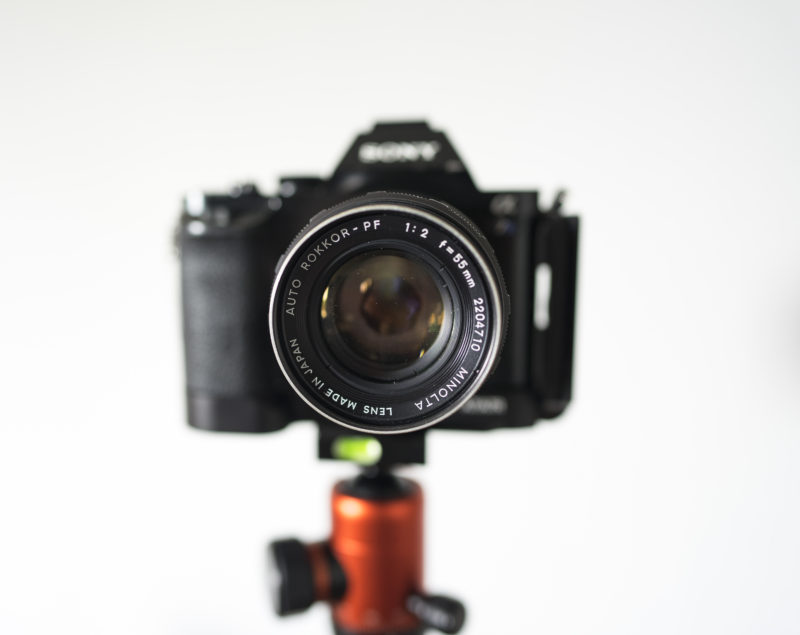
The Minolta Auto Rokkor-PF 55 mm f/2 is a small legacy standard lens from the sixties. Does this lens still deserve a spot in a modern camera bag?
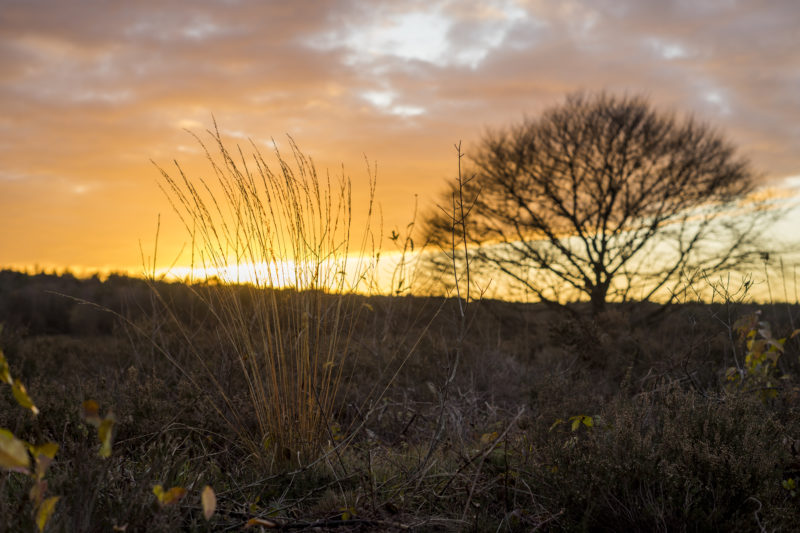
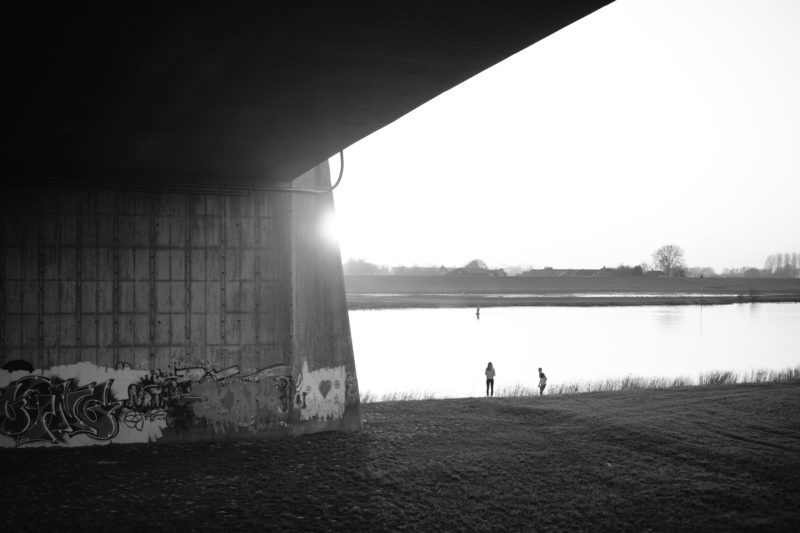
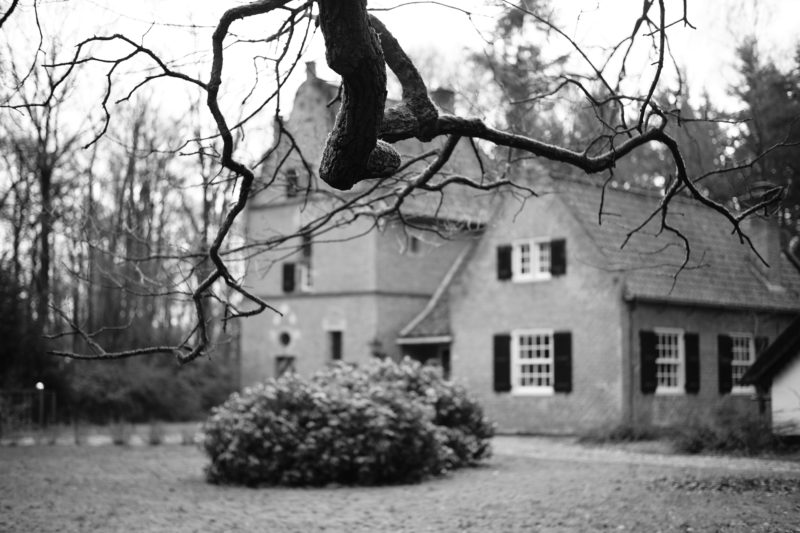
Versions and history
There are four different versions of this lens, all with 6 elements in 5 groups (an overview can be found here).
- The first version (1959) was introduced in 1958 and can be recognized by half click stops between f/2 and f/5.6. This version has a silver nose/front ring and 8 aperture blades and a minimum aperture of f/22.
- The second version (1961) also features a silver ring but has a minimum aperture of f/16. This versions also features 8 aperture blades.
- The third version (1965) has no silver front ring and its serial number starts with a 2. This version only features 6 aperture blades and has a minimum aperture of f/16. This is the version this review is about.
- The fourth version (1967) also has 6 aperture blades and a minimum aperture of f/16. The serial number of this version starts with a 4.
| Diameter | 60 mm |
| Length | 35 mm (focused at infinity) |
| Filter Thread | 52 mm (metal) |
| Weight | 225 g |
| Max. Magnification | (~)1:7.7 |
| Close focusing distance | 0.55 m |
| Number of aperture blades | 6 (slightly rounded) |
| Elements/Groups | 6/5 |
(Third version)
If you get this lens please consider to use the affiliate* links below. This doesn’t cost you any extra and we get a small commission to keep the blog running 🙂
Lens:
Ebay.com* | 30-100$ depending on the condition and version
Ebay.de*| +/- €70,-
Adapter:
Ebay.com* | +/- 30$
Ebay.de* | €22,-
Build quality and handeling
The Minolta auto Rokkor-PF 55 mm f/2 is a very well built lens. Everything is made from either glass or metal. After over 50 years my lens still looks quite good and the focus and aperture rings still operate with ease. It doesn’t get much better than this, even if you spend $1000 today.
The lens is small and not very heavy, it feels well balanced on both my a7S and a7II.
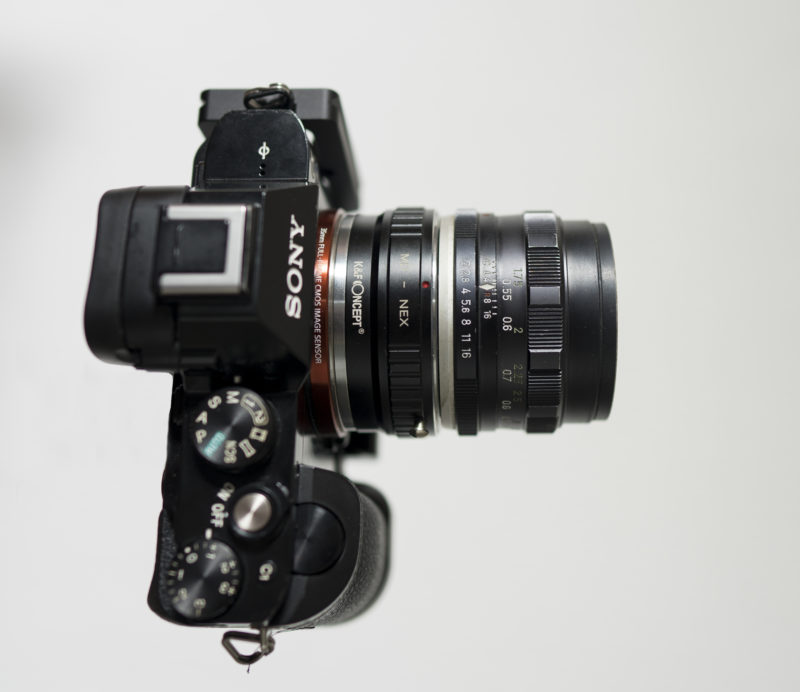
The Minolta auto Rokkor-PF 2/55 has a metal focus ring with good grip. The focusing ring travels about 80° from 55 cm to 1 m and a further 45° to infinity.
The aperture ring feels really nice with distinctive half stop clicks. I think it is one of the nicest aperture rings I have used so far.
The MFD of 55 cm is a bit below average for a normal lens but the five extra mm’s compensate a bit here.
The lens has 52 mm filter thread that doesn’t rotate, therefore using a CPL is easy. I don’t have the original hood but it came with one from Hoya that works quite OK.
To use the Minolta auto Rokkor-PF 55 mm f/2 on an E mount camera one needs an adapter. I use a K&F adapter for my Minolta lenses and it works fine. Of course there a better adapters available like the Novoflex one but these are also much more expensive. More information can be found here.
Vignetting
| Aperture | Vignetting |
| f/2 | 1.9 |
| f/2.8 | 0.9 |
| f/4 | 0.4 |
| f/8 | 0.4 |
Wide open vignetting can be visible and in some situations you might want to correct for it. At f/2.8 vignetting is already reduced a lot and from f/4 on vignetting is not visible in practical use. These are average figures for a normal lens.
Sharpness
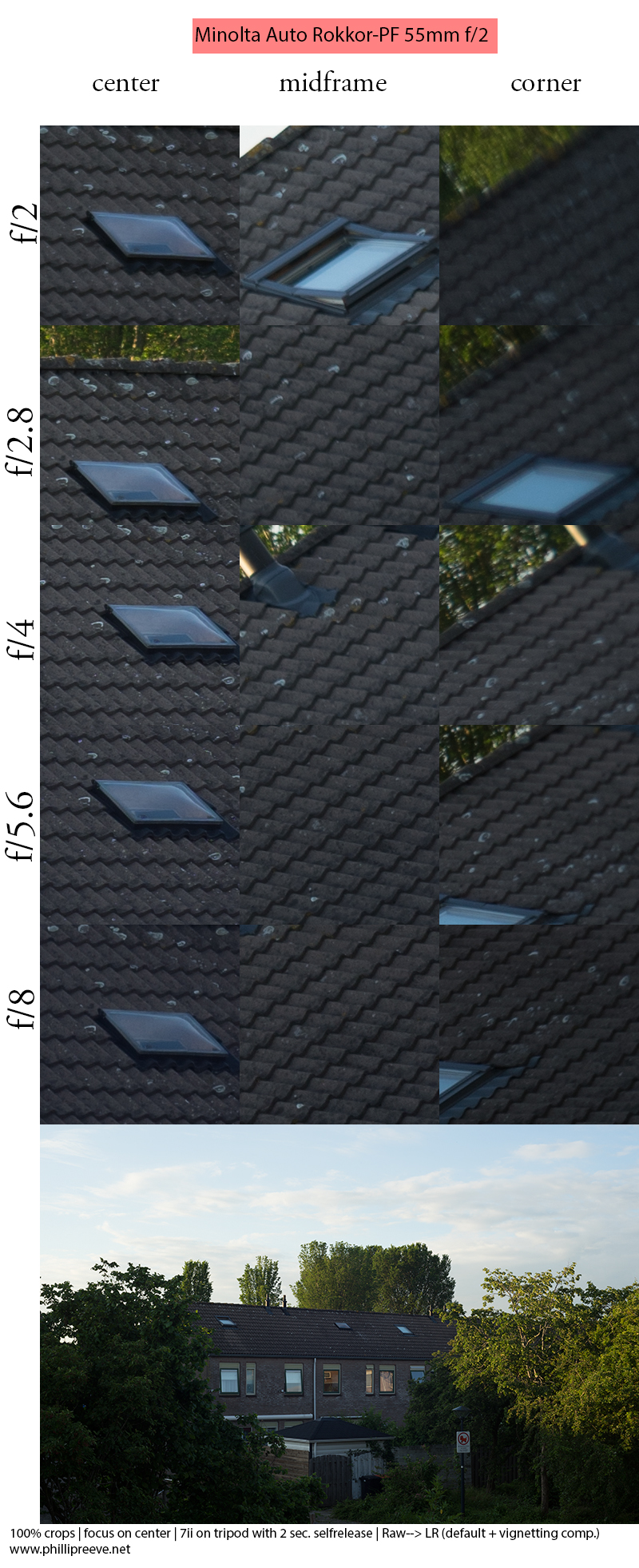
f/2: The center looks very good, the midframe looks good as well, only the extreme corners are soft. Contrast is not very high.
f/2.8: The center improves to very good to excellent levels, the midframe looks very good now. The corners improve a bit but are still soft. Contrast gets a significant boost.
f/4: Center is excellent by now as is the midframe. Corners improve quite a bit and look OK now
f/5.6: Center and midframe look excellent, the corners have improved and are now OK to good.
f/8: The center is a tiny bit softer due to diffraction. The corners look very good now. This is my preferred aperture for landscape photography.
For a lens of this age performance is very good. From all vintage fifties I have tested so far only the Minolta MD 50/2 showed significantly better sharpness in the corners at f/2.
Compared to the very best modern lenses wide open resolution across the frame falls a bit behind, however, at f/8 differences in sharpness are really negligible.
Near MFD there is a bit of glow and lowered contrast wide open, but image quality is certainly usable. Stopping down a bit improves image quality a lot though.
The Minolta 2/55 also works well with extension tubes. Wide open it is usable even with 77 mm of extension tubes (!!). However stopping down to f/4 is a good plan as image quality across the whole frame is superb at there. I was really surprised about this performance as the lens features no floating elements and is not optimized for this.
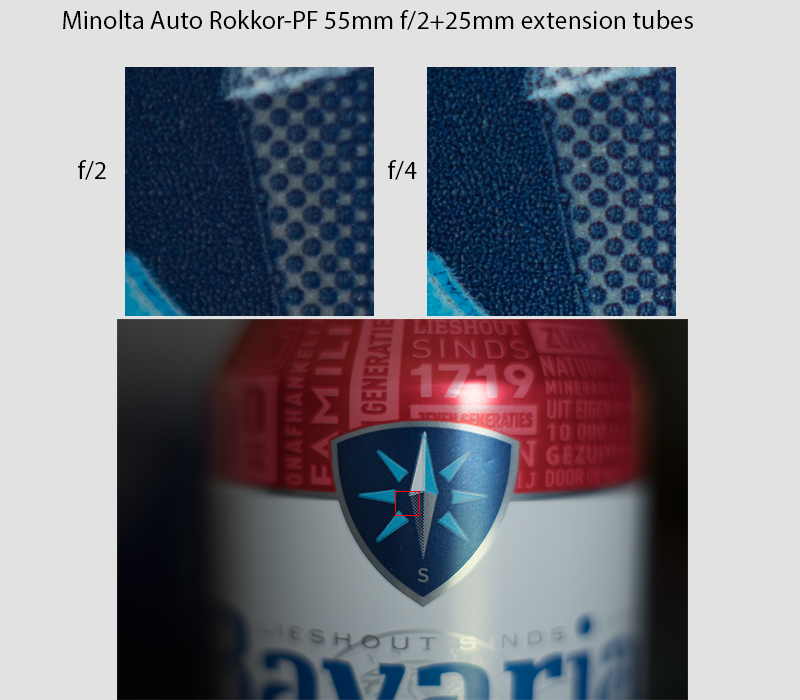
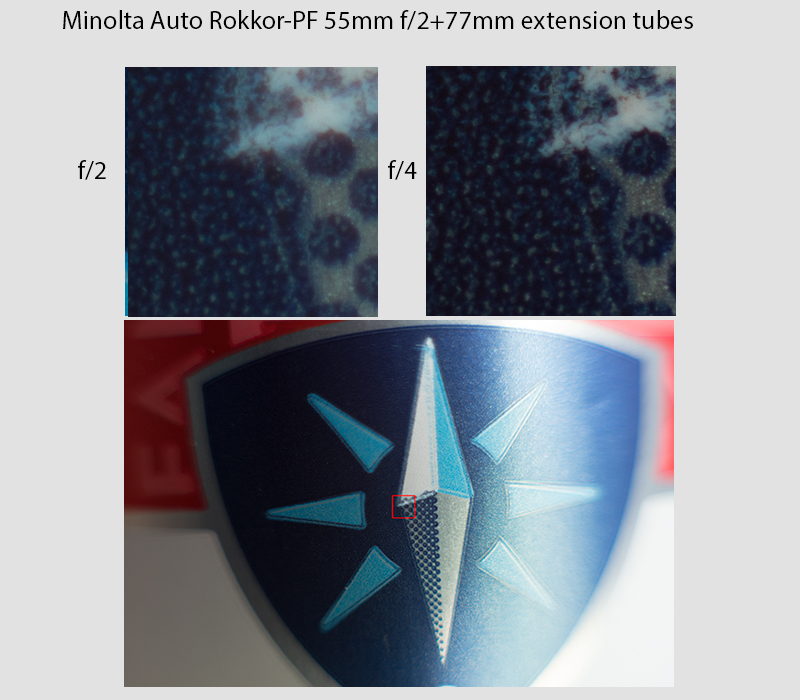
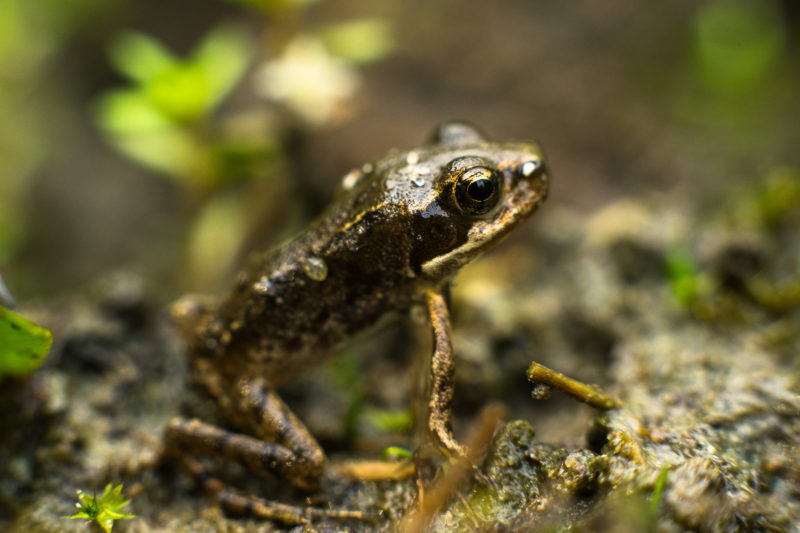
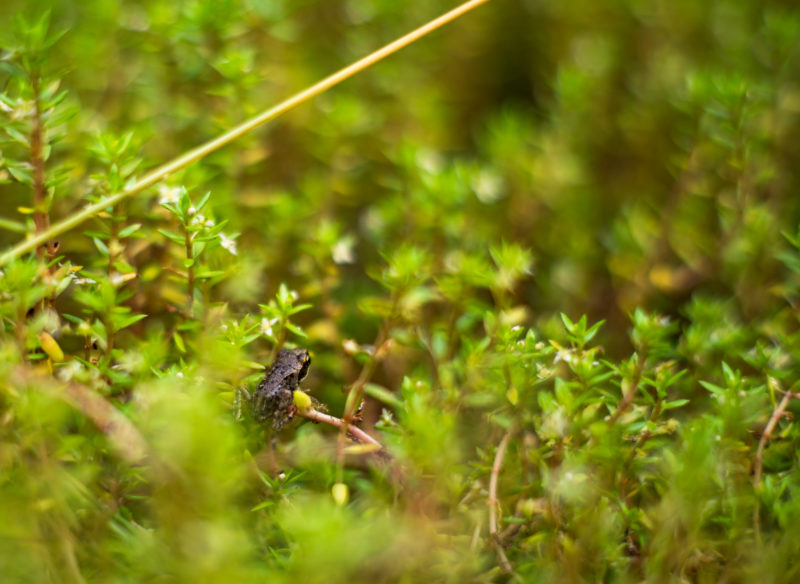
Bokeh
In most situations the bokeh is smooth and not distracting from the subject. The cats’s eye effect is certainly present but not very distracting. Unfortunately my version only has 6 aperture blades, despite being rounded a bit the shape is clearly visible already at f/2.8. When stopping down further then f/2.8 the shape of the bokeh becomes very distracting.
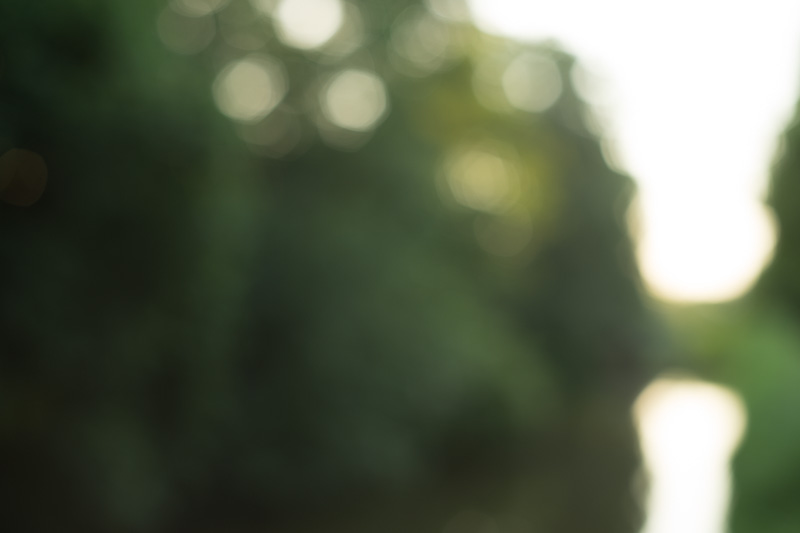
In very demanding situations with lit foliage the bokeh gets more distracting, although I would still call it OK to decent. Many other vintage lenses render much more distracting in these circumstances.

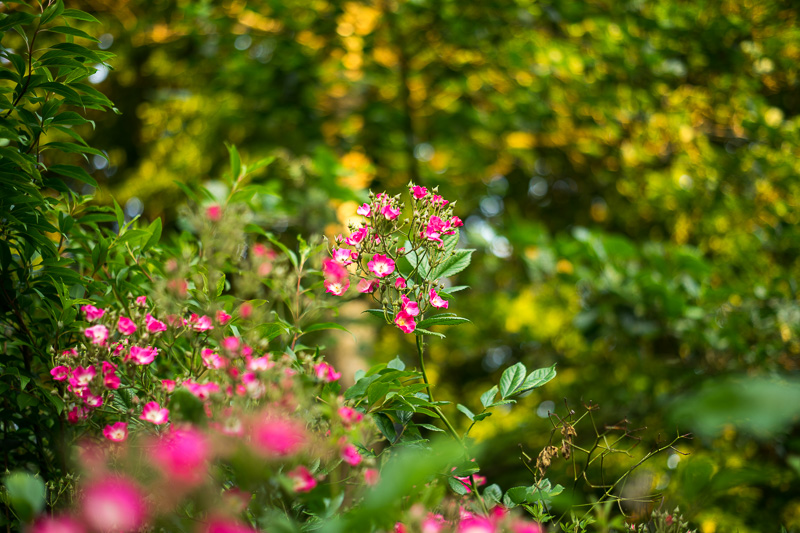

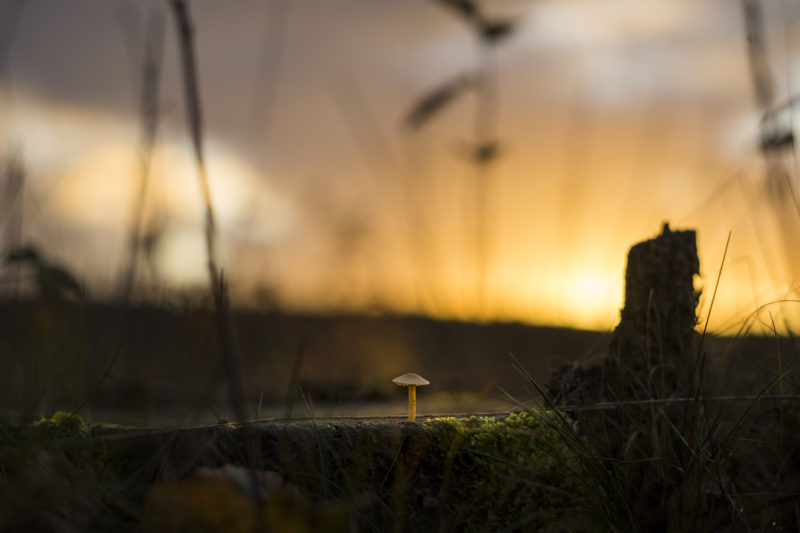

Flare resistance
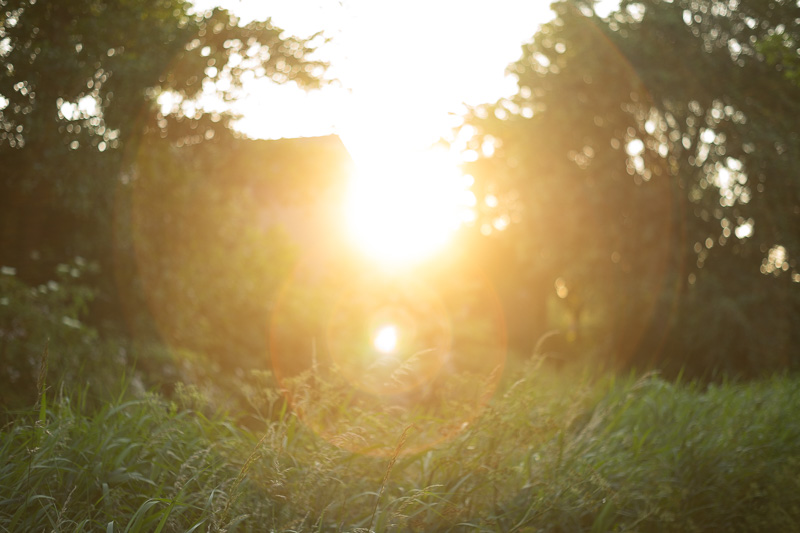
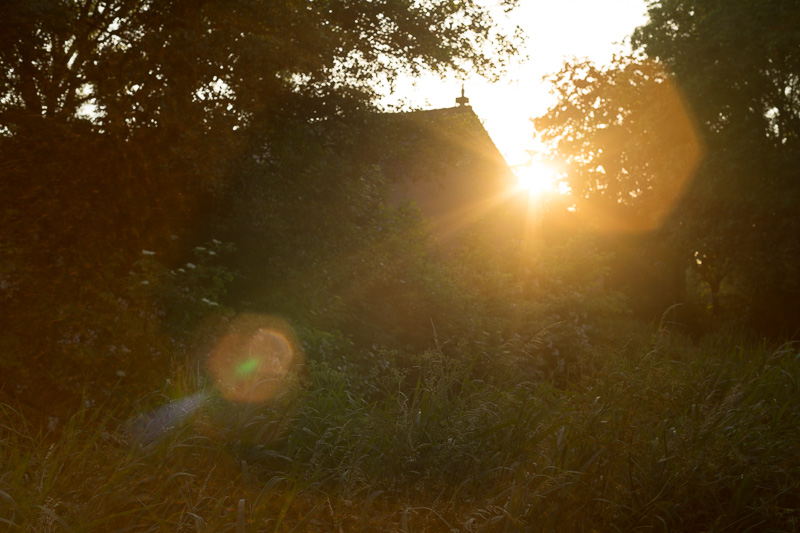
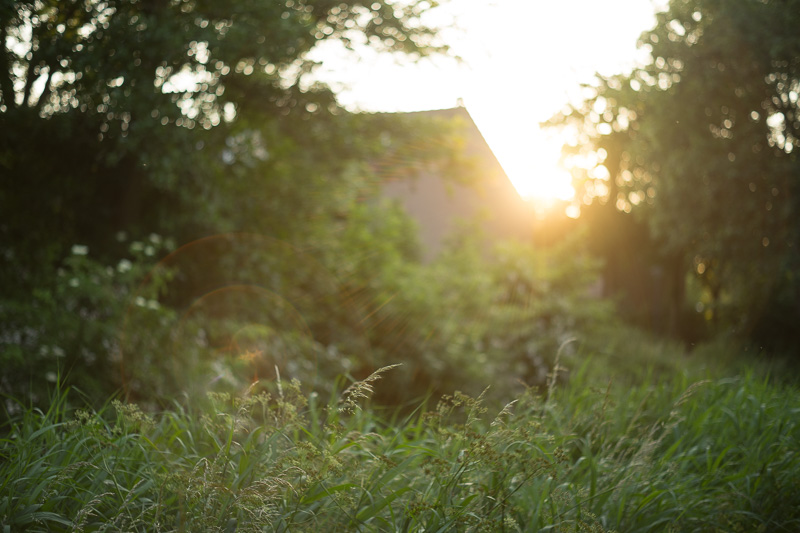
Flare resistance definitely is the weak spot of the Minolta Auto Rokkor-PF 55 mm f/2. With the sun inside and just outside the frame significant veiling flare can be provoked. Also a lot of ghosting is visible and unfortunately ghosting gets more pronounced when stopping down with this lens.
Chromatic aberrations
Longitudinal chromatic aberration (LoCA) are present wide open, stopping down to f/2.8 reduces LoCA a lot and at f/4 LoCA is gone.
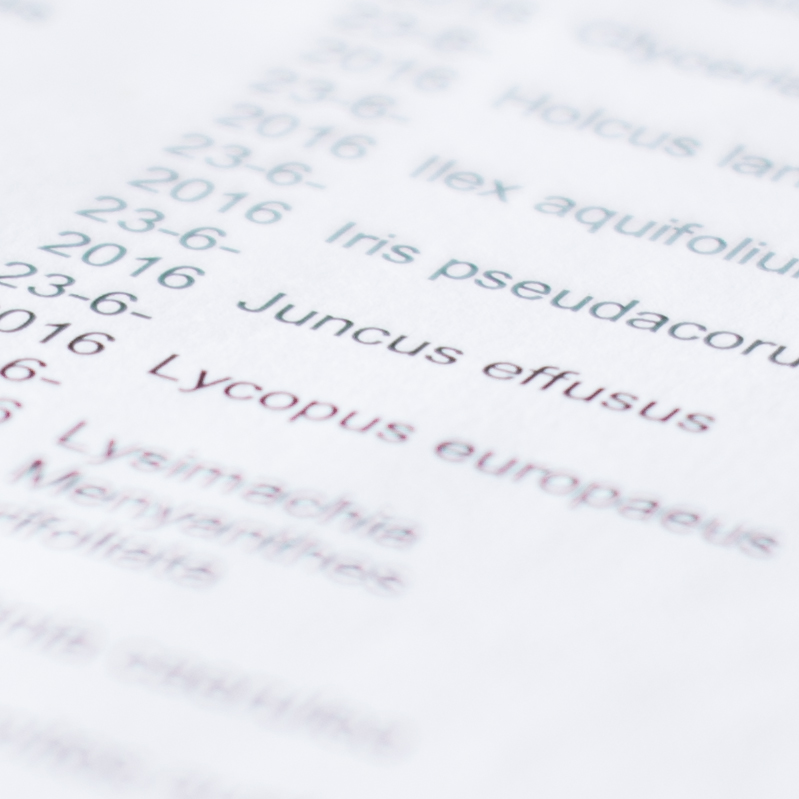
Lateral chromatic aberrations are corrected very well, I have not been able to spot any.
Coma

Coma is certainly present as can be seen in the 100% crops of the upper right corner above. For wide open shooting with (city)lights this lens is a bad choice, also for wide open astro photography better options are available. However, stopping the lens down to f/4 reduces coma a lot and when stopping down further, coma completely disappears.
Alternatives
MINOLTA MC ROKKOR 1:1.7 55 MM
Very similar, but faster. The Rokkor 55/2 may be a tad sharper and bokeh is a tad smoother but that is hard to tell without directly comparing both.
MINOLTA MD 50MM 1:2
It is smaller, lighter cheaper and sharper, bokeh is less smooth though. Build quality is also much less nice.
CANON NEW FD 50 MM 1:1.4
Sharper than the Minolta but with less smooth bokeh
MINOLTA MC ROKKOR 50MM 1:1.4
Faster but with busier bokeh, it also is a little bigger and heavier.
ZEISS LOXIA PLANAR 2/50 T*
This modern manual focus lens even feels a bit nicer than the Rokkor. The Loxia is also sharper at wider apertures with more contrast, better flare resistance and better coma correction. The bokeh of the Loxia is busier though, the Rokkor fares much better in this regard.
SONY FE 1.8/50 (SEL50F18F)
A small and light alternative with AF. Flare resistance is better and sunstars are nicer, bokeh an LoCA are worse though. If you are on a budget and AF is important to you this one is worth a try. AF is supposed to be quick on third generation bodies but slow on earlier camera’s.
Conclusion
| Good | Average | Not good |
|
|
|
The Minolta Auto Rokkor-PF 55 mm f/2 is an interesting quite well rounded fifty. It combines decent sharpness with nice contrast and to my taste very pleasant bokeh. Certainly there are some flaws like the shitty flare resistance and corner resolution wide open. Still it is my favorite fifty (and I have quite a few of them) and I always take it with me. I like the size, handling and bokeh rendering a lot.
So if you are looking for a fifty with great build quality, nice bokeh and decent sharpness, this one certainly is worth a look.
If you want the sharpest lens available with very high contrast and good flare resistance, or is AF important to you, than there are better options on the market.
If you want to get this lens please consider to use the affiliate* links below. This doesn’t cost you any extra and we get a small commission to keep the blog running 🙂
Lens:
Ebay.com* | 30-100$ depending on the state and version
Ebay.de* | +/- €70,-
Adapter:
Ebay.com* | +/- 30$
Ebay.de* | €22,-
Sample images can be found in high resolutionm in this Flickr album.
Sample images
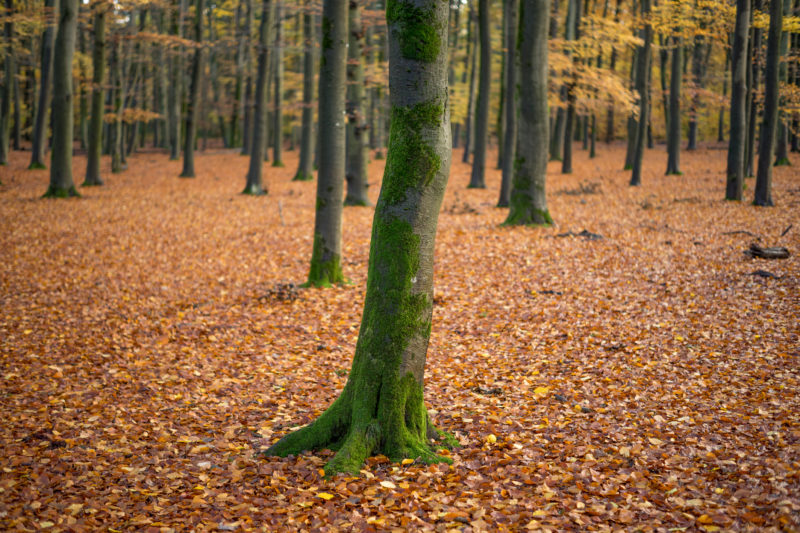
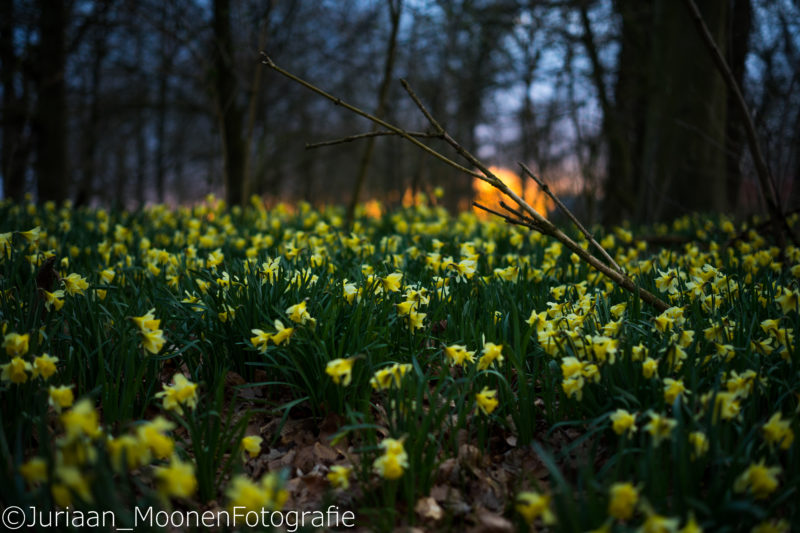
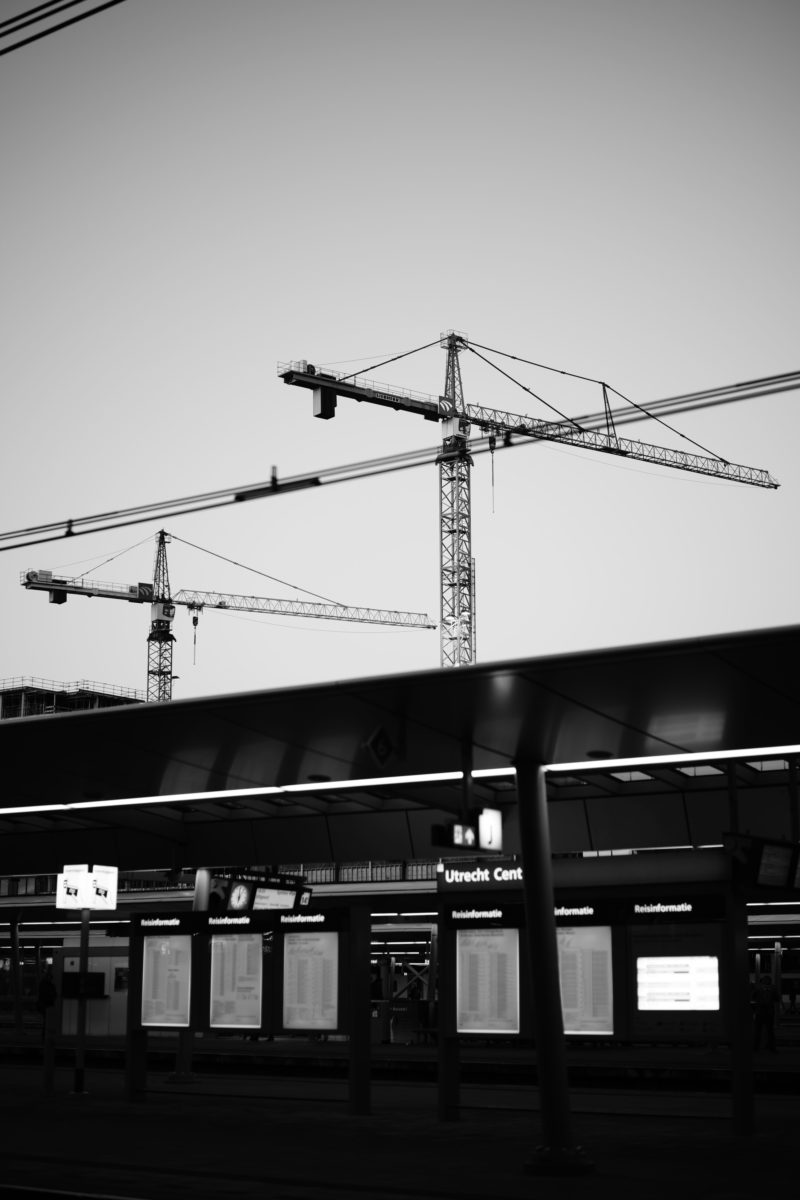
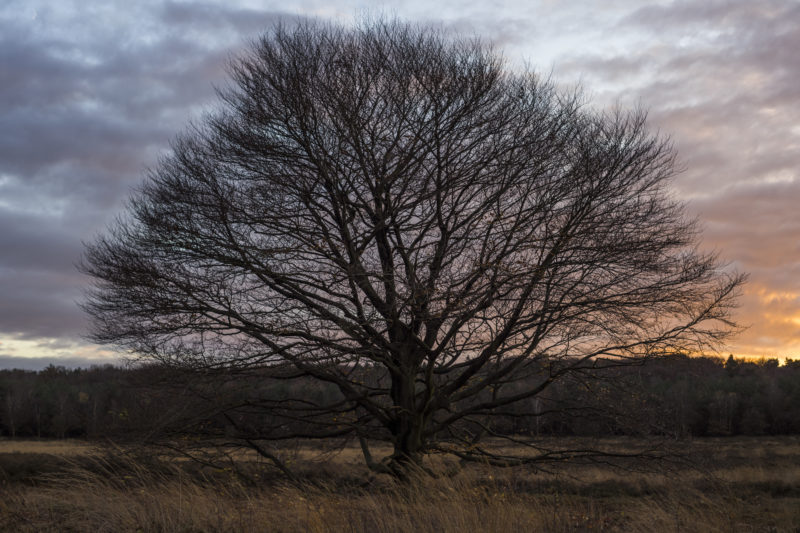
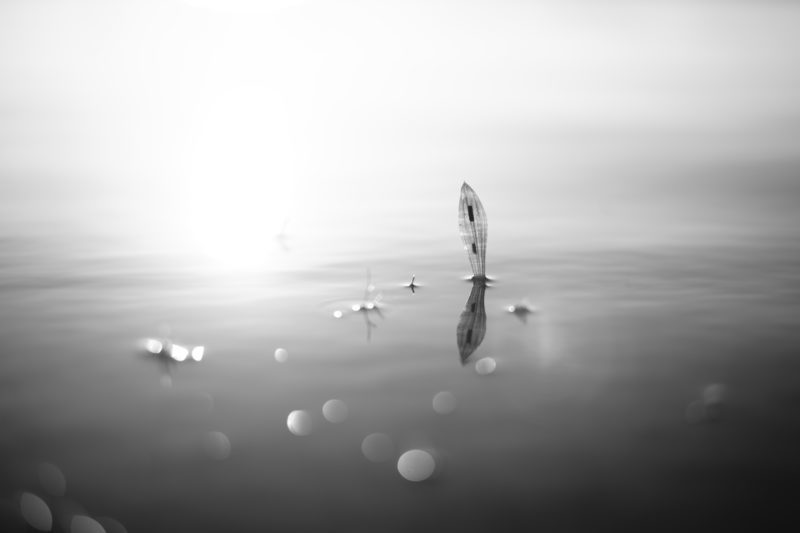
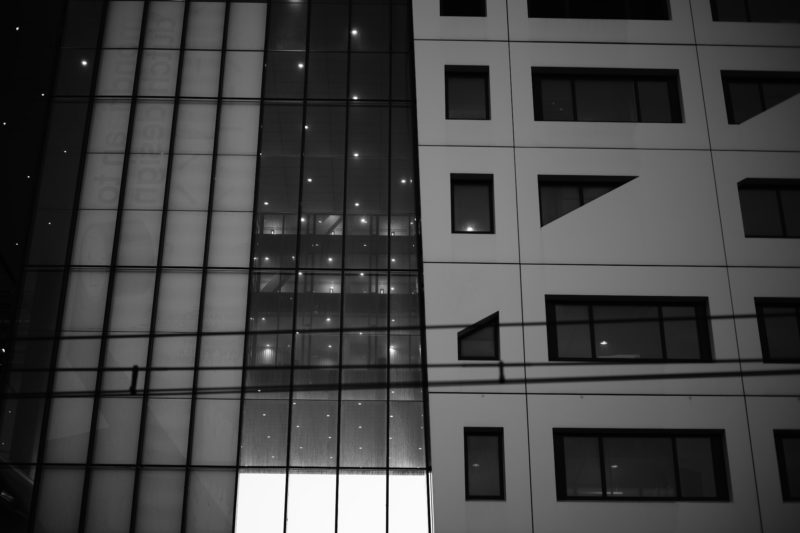
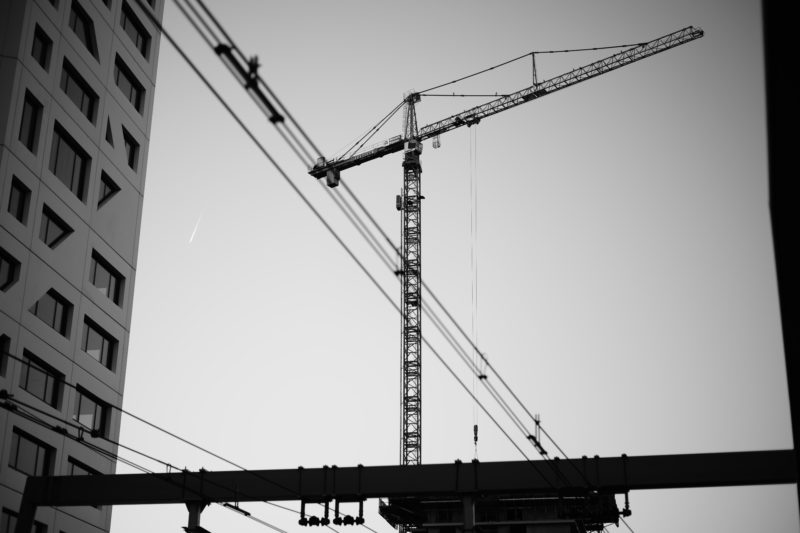
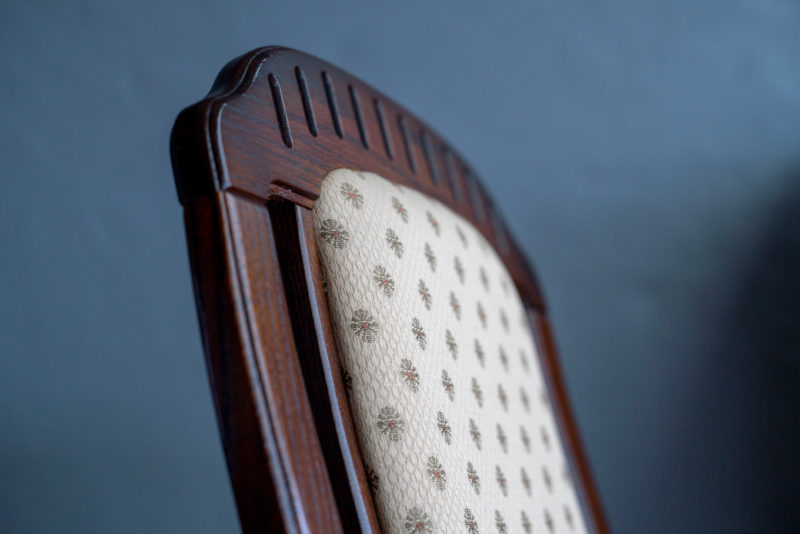
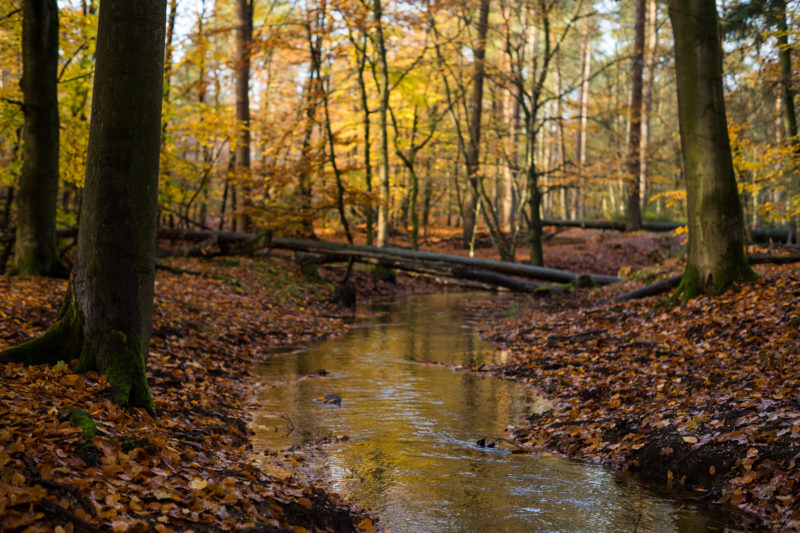
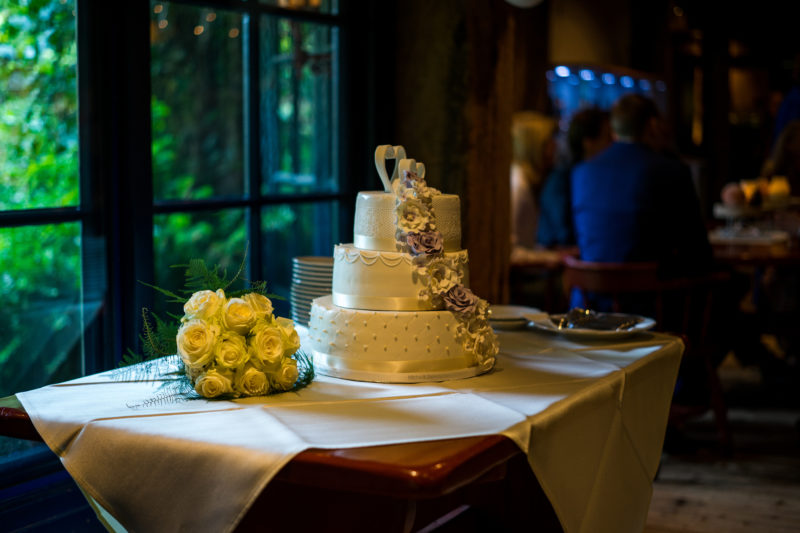

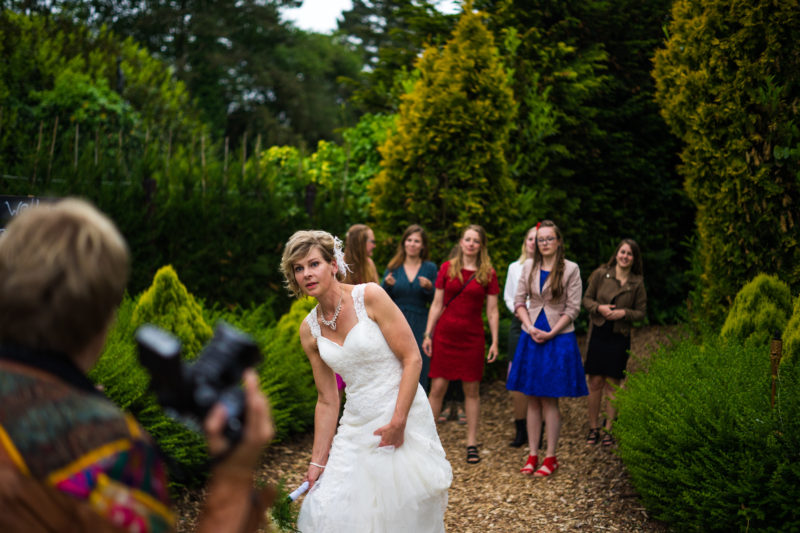
Further reading
- AFFORDABLE MANUAL LENSES FOR THE SONY ALPHA 7,7R,7II,7RII AND 7S
- THE RATED LIST OF MINOLTA MD/MC LENSES ON THE SONY A7
- REVIEW: PENTACON AUTO 50 MM F/1.8 MULTI COATING
- A $400 LENS KIT FOR YOUR SONY A7 SERIES CAMERA
- BEST SONY FE LANDSCAPE LENSES FOR THE POOR STUDENT
This site contains affiliate links. If you make a purchase using any of the links marked as affiliate links, I may receive a small commission at no additional cost to you. This helps support the creation of future content.
JuriaanM
Latest posts by JuriaanM (see all)
- Review: Sigma 85mm f/1.4 DG DN Art - January 8, 2022
- A beginners guide to landscape astro photography - March 11, 2021
- Canon newFD 50mm f/1.8: A review - January 4, 2021

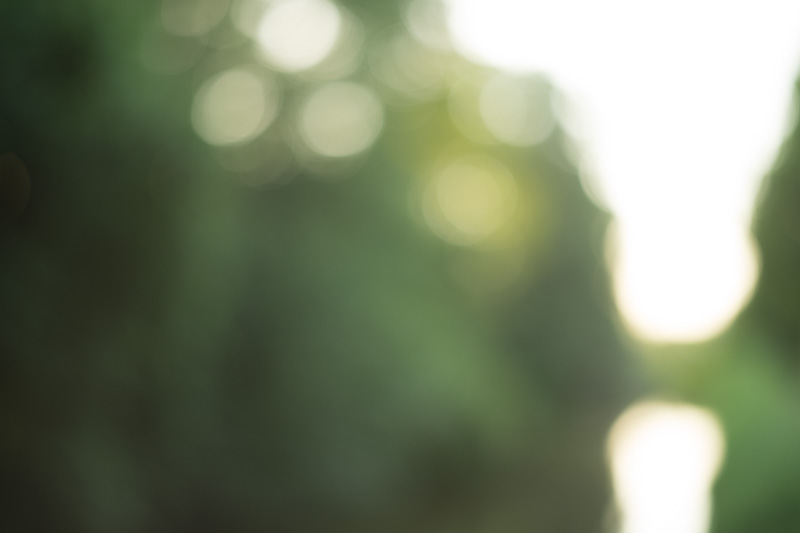


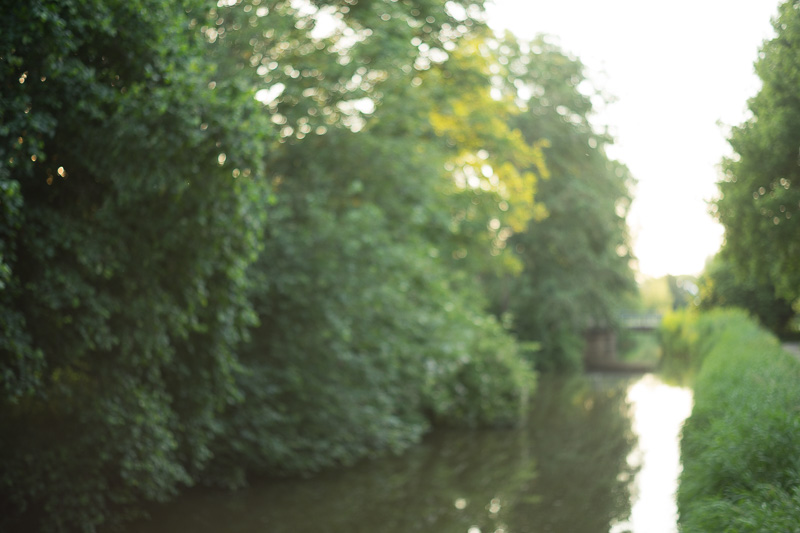
I have both the 55 f2 and 55 f1.7, and i can say that the f2 one is a solid performer, i got it for under 10 bucks, the only downside was the annoying aperture control ring, requiring pressing the button in order to change the aperture. And it would be very nice if you review the super takumar 105 f2.8, the m42 ones, i heard it is a very good len for portrait 🙂
My samples didn’t have such a aperture control ring. What version do you have?
It’s on the first (1959) version.
After some grinding 30 minutes ago, I’ve reshaped weird internal hook mechanism into a click-stop one.
I own the 55 f1.7 and like it very much. Especially the „shitty“ flares … 😉
I have the Rokkor-x 50 1.4 already, and I absolutely adore it, but I’m still kinda interested in this lens…
I know bokeh is very subjective, and I may be strange, but I really like the hexagonal bokeh and six point sunstars these lenses make when stopped down.
Also, in certain situations, I kinda like the shitty flares old lenses like these produce.
Everybody has a different taste 😉
I don’t/didn’t have this but there were about a dozen about 50mm. More long 55mm typically more interesting. 55 was Fujinon , Petri , Minolta 1.7. Now there are Pentax K 55/1.8 , FL 55/1.2 and Topсor 58/1.8. Pentax is my most requested chew.
Thanks for the review.
It was interesting to see minolta’s 55mm f2 bokeh.
There is one downside to some of the old minolta lenses which you should have mentioned though. Some of them are hard to clean the inside. The green coating (The fabled minolta’s achromatic coating ) just behind the foremost lens element is so incredibly delicate. It is likely water soluble and the surface just loves to keep water marks and keen to gain scratches, so wet cleaning behind the foremost lens element results in a disaster like this: https://www.flickr.com/photos/163756246@N03/48138140426/in/album-72157709215159812/
I got a copy of MINOLTA MC TELE ROKKOR-PF 135mm f2.8 and here are some samples: https://www.flickr.com/photos/163756246@N03/albums/72157709215159812
I just noticed that I have failed PP and the images look dull, but the lens itself is reasonably sharp.
Thank you for your reply, I wasn’t aware of these issues.
I’m not that handy so I don’t CLA lenses myself, but for people who do it certainly is something to take in consideration.
Tinkering lenses is often a pain without a gain, so asking professionals to service them is just wise.
AC coating appeared during 1950s, and as a SLR lens auto rokkor PF F1.4 55mm was probably the first to use it; the lens was made for the company’s first SLR Camera SR-2.
The coating faded away gradually. First minolta started to apply AC coating to only one lens element instead of two;MC lenses has one ac coated lens, Auto lenses have two. By the time new MD was introduced, Achromatic coating was no more.
From what I heard, minolta’s early rendition depended to AC coating, and thus as ac coating faded so did the minolta’s smooth rendition; as the time progressed from Auto to MC, MC to new MD, sharpness improved and smoothness diminished.
There is no cure to aging coating and no repairman I know of dares to touch it, so Minolta’s green lenses will likely all perish in a decade or two. Enjoy it while you can everyone and have a spare lens if you really love it.
Who knows, the earlier version of the 8-blade diaphragm is different optically ?
To my eye the 1965 version from this review looks a bit smoother than 1959 version.
My copy have no signs of yellowing or tint on the front glass but on the first photo your lens looks quite yellow. Do you know if these are radioactive? Thanks..
As far as I know this one should not be radioactive. I’ve had two copies of the lens with equally coloured glass.
Hi Juriaan,
want to buy an older 50mm Rokkor lens. Actually i have the choice between Rokkor-PF 50mm f1.7,
Rokkor -PF 50mm f2.0.
Which one do you recommend ?
I use only analog cameras. And i like low light photography, therefore i need good or decent image quality at f1.7/ f2.0/ f2.8/ f3.5.
Many thanks !
Hi Jens,
I have never used those two, but I have the Minolta MD 2/50 and 1.7/50. Both fine lenses, in case you need the speed I would pick the 50/1.7.
Juriaan
I have this lens and I love the results i get from it. Bokeh wide open is about the softest you can find in a vintage lens: https://flic.kr/p/2oXvTdg
Stopped down it’s pretty darn sharp:
https://flic.kr/p/2oiR4fa